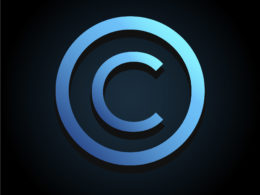In 2020, the COVID-19 pandemic brought the film industry to an abrupt halt. Studios were forced to delay productions and releases, and theaters were forced to close indefinitely. As movies slowly returned to theatrical releases in August 2020, consumers remained hesitant to return to crowded theaters due to risk of infection.1[1]Lindsey Bahr, “We Have Our Masks On”: Movie Fans Cautiously Return to AMC and Regal’s Reopened Theaters, USA TODAY (Aug. 20, 2020, 7:06 PM), https://www.usatoday.com/story/entertainment/movies/2020/08/20/amc-reopens-movie-theaters-after-months-covid-closures/3403160001/. In an effort to minimize losses, major studios turned to the day-and-date release model.
The day-and-date release model, or simultaneous release model, allows studios to release films on multiple platforms simultaneously. Today, the day-and-date model usually means that a movie is released simultaneously in theaters and on streaming services. While smaller studios used this model for lower budget movies in the past, major studios only recently adopted this model for the release of some of the biggest blockbusters of 2020 and 2021.
The increased use of the day-and-date release model is disrupting the revenue and compensation of theater owners, filmmakers,2[2]The term “filmmakers” refers to directors, writers, or producers, but not film studios. and actors alike, as box office revenue is often central to their payment scheme. The model, however, is likely here to stay. Studios, theater owners, actors and filmmakers are all innovating as to payment schemes to account for the gaining popularity of the day-and-date model. Despite the disruption, the model is a boon to consumers because the model allows consumers to view blockbuster films more easily, as they do not have to leave their homes to do so.
Rising Use of the Day-and-Date Release Model
Theater owners, distributers, and consumers each have potentially competing interests when it comes to where and when films are released. Prior to the pandemic, most films were subject to a three-month theatrical window.3[3]Rebecca Rubin, RIP to the 90-Day Theatrical Window, VARIETY (May 14, 2021, 1:44 PM), https://variety.com/2021/film/box-office/theatrical-window-dead-1234973333/. The theatrical window is a customary provision in agreements between studios and theater owners regarding the length of time that movies play exclusively in theaters.4[4]Id. The theatrical window satisfies the interests of theater owners in retaining film exclusivity for as long as possible to maximize their revenue.5[5]Kathryn Arnold, “Day and Date” Release Patterns: What is Video-on-Demand’s (VOD) Impact on the Distribution Timeline?, HGEXPERTS (last visited Mar. 15, 2022, 10:36 PM), https://www.hgexperts.com/expert-witness-articles/day-and-date-release-patterns-what-is-video-on-demand-s-vod-impact-on-the-distribution-timeline-42285. Distributors, however, favor a film release on as many platforms as possible to recoup revenue in a shorter period.6[6]Id. Consumers want to see movies in the most convenient and cost-effective manner possible.7[7]Id.
Due to pandemic-related restrictions, however, large studios were forced to consider an alternative model to theater exclusivity to allow their highly-anticipated releases, which would have enjoyed large-scale premiers in theaters, to be shown in homes while theaters were closed or running at reduced capacity. Even as restrictions began to lift and in-theater viewing resumed, studios needed to account for individuals who remained reluctant to return to theaters. Thus, studios increasingly turned to the day-and-date model, which eliminated theater exclusivity and allowed studios to continue to reach audiences and earn a profit while theater attendance remained unpredictable.
Popular use of the day-and-date model by major studios began with Universal’s8[8]UNIVERSAL STUDIOS, https://www.universalstudios.com (last visited Mar. 25, 2022, 5:35 AM). release of Trolls World Tour in April 2020, after Universal announced that it would release all films with a Premium Video on Demand (“PVOD”) option.9[9]Tom Brueggemann, A Guide to How Each Studio Now Handles Theatrical Windows, INDIEWIRE (Jul. 22, 2021, 6:18 PM), https://www.indiewire.com/2021/07/each-hollywood-studio-theatrical-windows-1234652708/. Warner Brothers10[10]WARNER BROS., https://www.warnerbros.com (last visited Mar. 25, 2022, 5:37 AM). also announced that, starting with the release of Wonder Woman 1984 in December 2020, all films released in theaters would be released simultaneously on HBO Max11[11]HBO MAX, https://www.hbomax.com (last visited Mar. 25, 2022, 5:40 AM through 2021.12[12]Brueggemann, supra note 9. Disney 13[13]DISNEY, https://www.disney.com (last visited Mar. 25, 2022, 5:41 AM). adopted a more complicated scheme with respect to its streaming service Disney+: some titles are free for subscribers; some titles are PVOD for subscribers but with a fee; some titles are both PVOD and released in theaters; and some titles are released in theaters only.14[14]Brueggemann, supra note 9.
The Day-and-Date Release Model Has Reduced Compensation for Theater Operators, Filmmakers, and Actors
The switch to day-and-date releases by major studios during the pandemic came at the expense of theater operators, filmmakers, and actors, who rely heavily on box office revenue. Studios usually split ticket revenues with theaters, but keep most of the profit generated from streaming the movie when released on streaming services.15[15]R.T. Watson, Want to Be a Hollywood Player? Covid and Streaming Have Changed All the Rules, WALL STREET JOURNAL (Jan. 21, 2021, 11:45 AM), https://www.wsj.com/articles/want-to-be-a-hollywood-player-covid-and-streaming-have-changed-all-the-rules-11611247554.
Day-and-date releases by major studios allow consumers to enjoy blockbuster releases without attending theaters. When consumers watch a new release in their homes, box office revenue shrinks, causing theaters to lose revenue.
Actors and filmmakers also lose out on revenue with the day-and-date release model, often because their compensation is tied to box office revenue. Customarily, actors and filmmakers are paid through a combination of fixed and contingent compensation, along with certain streaming or award bonuses.16[16]Matthew Kassoria, Movie Contracts in the Age of Streaming, CORNELL DAILY SUN (Aug. 20, 2021), https://cornellsun.com/2021/08/20/movie-contracts-in-the-age-of-streaming/. Contingent compensation relies on measurable numbers, like box office revenue, digital and DVD sales, or distribution fees which may include television and film rentals, foreign distribution, or merchandising.17[17]Id. When an actor or filmmaker’s contract is structured so that contingent compensation correlates heavily with box office revenue, the actor or filmmaker earns significantly less when a studio uses the day-and-date release model.
Scarlett Johansson v. Disney
Before the start of the pandemic, actors and filmmakers were concerned that studios would use a day-and-date model to bolster the success of streaming platforms, in turn reducing box office revenues and contingent compensation to actors filmmakers. For example, in 2019, representatives for Scarlett Johansson, the star of Marvel’s Black Widow, contacted Marvel to ensure that Black Widow would enjoy an exclusive theatrical release. 18[18]Joe Flint and Erich Schwartzel, Scarlett Johansson Sues Disney Over ‘Black Widow’ Streaming Release, WALL STREET JOURNAL (Jul. 29, 2021, 5:57 PM), https://www.wsj.com/articles/scarlett-johansson-sues-disney-over-black-widow-streaming-release-11627579278?mod=searchresults_pos13&page=1&mod=article_inline. Johansson had concerns about the film’s release due to the announcement by Disney—Marvel’s parent company—that Disney+ would be the “go-to source to stream the MCU [Marvel Cinematic Universe].”19[19]Complaint and Demand for Jury Trial at 4, Periwinkle Entertainment, Inc. v. The Walt Disney Co., No. 21STCV27831 (Jul. 29, 2021). At the time, Marvel assured her that the release would have a typical theatrical window. In an email, Marvel’s Chief Counsel, Dave Galluzzi, stated that “[Marvel counsel] understand[s] that should the plan change, we would need to discuss this with [Johansson] and come to an understanding as the deal is based on a series of (very large) box office bonuses.”20[20]Id.
But in 2021, Disney released Black Widow on its streaming platform at the same time as the film’s theatrical release.21[21]Id. at 1. Johansson sued, alleging Disney, intentionally interfered with contractual relations between Marvel and Johansson and induced Marvel’s breach of contract.22[22]Id. at 2. The complaint alleged Disney intended to “lure the Picture’s audience away from movie theatres and towards its owned streaming service,” and “substantially devalue Ms. Johansson’s agreement and thereby enrich itself.” 23[23]Id.
According to the complaint, Marvel promised Johansson that Black Widow would have a “wide theatrical release,” meaning an exclusive theatrical release for 90 to 120 days.24[24]Id. at 3. But Disney released Black Widow simultaneously in theaters and on its streaming platform with Premier Access, a new model which allowed subscribers to view the movie as many times as they wanted for $30.25[25]Id. at 4. When the movie was released, box-office receipts were “significantly below” the opening weekend performance of previous Marvel films. 26[26]Id. at 13. Black Widow’s day-and-date release reportedly cost Johansson over $50 million because her compensation was largely based on box-office receipts. 27[27]Id.; Flint, supra note 19.
The lawsuit also notes that annual bonuses for Disney’s chairman, Robert Iger, and Disney’s Chief Executive, Bob Chapek, were tied to the performance of Disney+. This perhaps provided an incentive for these Disney decisionmakers to use a day-and-date release model for bigger blockbusters, such as Black Widow.28[28]Id.
Disputes like this between actors or filmmakers and studios are becoming increasingly common as the day-and-date model gains popularity. Infinite star Mark Wahlberg and The Quiet Place II director John Krasinski had similar disagreements with Paramount29[29]THE STUDIOS AT PARAMOUNT, http://www.paramountstudios.com (last visited Mar. 25, 2022, 5:45 AM). when their respective films were set to release on Paramount’s streaming service, Paramount+,30[30]PARAMOUNT+, https://www.paramountplus.com (last visited Mar 25, 2022, 5:46 AM). with little to no theatrical window.31[31]Joe Flint, Scarlett Johansson Lawsuit Stirs Debate Over Streaming-Era Movie Compensation, WALL STREET JOURNAL (Aug. 12, 2021, 6:20 AM), https://www.wsj.com/articles/scarlett-johansson-lawsuit-stirs-debate-over-streaming-era-movie-compensation-11628760602.
The Day-and-Date Release Model Will Shrink Theatrical Windows and Spur Innovation as to How Actors and Filmmakers Are Paid
While the COVID-19 pandemic spurred the widespread use of the day-and-date model, it is likely the model is here to stay. One result is that theatrical release windows will likely be shortened but not eliminated as theaters fight for profits and studios recognize that theatrical releases will generate profits for them by meeting the interests of moviegoers who enjoy the theater experience. Major studios, such as Warner Brothers and Paramount, announced new theatrical windows weeks shorter than the customary three-month period. For 2022, Warner Brothers agreed to wait forty-five days before releasing films to HBO Max.32[32]Brueggemann, supra note 9. Paramount seems partial to a forty-five-day release window, adding titles to Paramount+ after the window ends.33[33]Id. Although Sony34[34]SONY PICTURES, https://www.sonypicturesstudios.com (last visited Mar. 25, 2022, 5:48 AM). has yet to announce a release policy, it seems to favor keeping a longer theatrical window.35[35]Brueggemann, supra note 9. Lionsgate36[36]LIONSGATE, https://www.lionsgate.com (last visited Mar. 25, 2022, 5:51 AM). also has not announced a release policy, but its titles are released on streaming services between three and five weekends after a film’s theatrical release.37[37]Brueggemann, supra note 9.
The day-and-date release model is also resulting in changing the terms of contracts between studios and actors and filmmakers to account for decreased box office revenue. Compensation agreements have customarily been tied to box office numbers because these numbers are easily measurable, interpretable, and available. However, because streaming has been used to supplement theatre releases, studios needed to find new ways to compensate talent using streaming numbers or pay schemes that did not include box office profits.
While viewership data for subscription-based streaming platforms could be a potential metric used in compensation negotiations, subscription-based streaming services historically do not publish this data.38[38]Kassoria, supra note 17. These services also tend not to release information about how viewership translates into revenue and which productions draw new subscribers.39[39]Id. This uncertainty makes it difficult for actors and filmmakers to assess what they should be paid as movies move to streaming platforms. Despite this, several compensation models have emerged in an effort to allow actors and filmmakers to receive more equitable payment that is not primarily tied to box office revenue.
Gaining popularity is a performance-based compensation model that would include a bonus when the movie performs well on streaming platforms.40[40]Watson, supra note 16. While this model may still take box office revenue into account, it also allows filmmakers and actors to benefit from streaming successes in a way that looks similar to past agreements that only include box office revenue compensation.
Additionally, some studios are looking to move toward a payment model previously popularized by Netflix,41[41]NETFLIX, https://www.netflix.com (last visited Mar 25, 2022. 5:52). consisting of larger fixed payments to talent with no profit participation.42[42]Flint, supra note 33. However, the information deficit related to streaming metrics persists even as studios move toward compensation agreements that pay talent larger fixed sums, as it is difficult to discern what a fair fixed sum may be.
Actors and filmmakers previously tied to compensation agreements primarily based in box office revenue have been able to negotiate new agreements that include buy-outs and updated compensation models. WarnerMedia,43[43]WARNERMEDIA, https://www.warnermedia.com/us (last visited Mar. 25, 2022, 5:54 AM). which operates HBO Max, paid more than $200 million to talent as part of amended agreements in which compensation was previously tied to box office performance.44[44]Watson, supra note 16. WarnerMedia made it easier for talent to earn a bonus on a film by lowering the amount of money a film would need to make at the box office to trigger a bonus.45[45]Flint, supra note 33. WarnerMedia also agreed to give profit participants, like actors and filmmakers, a percentage of the money HBO Max pays to license a film from Warner Brothers instead of relying solely on box office performance.46[46]Id. For example, Denzel Washington and Will Smith were bought out of previous deals consisting primarily of theatrical contingencies for about $25 million each under new agreements.47[47]Id.
Buy-outs and revised compensation models seem to be an acknowledgement by studios that, in the age of streaming, contingent compensation based on box-office numbers is no longer an equitable payment model. Especially when a studio owns a streaming service, it seems reasonable to allow profit participants to share in streaming profits as box-office attendance remains below capacity.
Regardless of shortened theatrical windows and finding new ways to equitably compensate actors and filmmakers, the large-scale popularization of the day-and-date model is an important development for consumers, as it ushered in an era of film-viewing that provides maximum consumer control.
Written by: Shannon Long
Shannon is a 2023 J.D. Candidate at Brooklyn Law School
1 Lindsey Bahr, “We Have Our Masks On”: Movie Fans Cautiously Return to AMC and Regal’s Reopened Theaters, USA Today (Aug. 20, 2020, 7:06 PM), https://www.usatoday.com/story/entertainment/movies/2020/08/20/amc-reopens-movie-theaters-after-months-covid-closures/3403160001/.
2 The term “filmmakers” refers to directors, writers, or producers, but not film studios.
3 Rebecca Rubin, RIP to the 90-Day Theatrical Window, Variety (May 14, 2021, 1:44 PM), https://variety.com/2021/film/box-office/theatrical-window-dead-1234973333/.
4 Id.
5 Kathryn Arnold, “Day and Date” Release Patterns: What is Video-on-Demand’s (VOD) Impact on the Distribution Timeline?, HGEXPERTS (last visited Mar. 15, 2022, 10:36 PM), https://www.hgexperts.com/expert-witness-articles/day-and-date-release-patterns-what-is-video-on-demand-s-vod-impact-on-the-distribution-timeline-42285.
6 Id.
7 Id.
8 Universal Studios, https://www.universalstudios.com (last visited Mar. 25, 2022, 5:35 AM).
9 Tom Brueggemann, A Guide to How Each Studio Now Handles Theatrical Windows, Indiewire (Jul. 22, 2021, 6:18 PM), https://www.indiewire.com/2021/07/each-hollywood-studio-theatrical-windows-1234652708/.
10 Warner Bros., https://www.warnerbros.com (last visited Mar. 25, 2022, 5:37 AM).
11 HBO Max, https://www.hbomax.com (last visited Mar. 25, 2022, 5:40 AM).
12 Brueggemann, supra note 9.
13 Disney, https://www.disney.com (last visited Mar. 25, 2022, 5:41 AM).
14 Disney+, https://www.disneyplus.com/welcome/stream-now (last visited Mar 25, 2022, 5:43 AM); Brueggemann, supra note 9.
15 R.T. Watson, Want to Be a Hollywood Player? Covid and Streaming Have Changed All the Rules, Wall Street Journal (Jan. 21, 2021, 11:45 AM), https://www.wsj.com/articles/want-to-be-a-hollywood-player-covid-and-streaming-have-changed-all-the-rules-11611247554.
16 Matthew Kassoria, Movie Contracts in the Age of Streaming, Cornell Daily Sun (Aug. 20, 2021), https://cornellsun.com/2021/08/20/movie-contracts-in-the-age-of-streaming/.
17 Id.
18 Joe Flint and Erich Schwartzel, Scarlett Johansson Sues Disney Over ‘Black Widow’ Streaming Release, Wall Street Journal (Jul. 29, 2021, 5:57 PM), https://www.wsj.com/articles/scarlett-johansson-sues-disney-over-black-widow-streaming-release-11627579278?mod=searchresults_pos13&page=1&mod=article_inline.
19Complaint and Demand for Jury Trial at 4, Periwinkle Entertainment, Inc. v. The Walt Disney Co., No. 21STCV27831 (Jul. 29, 2021).
20 Id.
21 Id. at 1.
22 Id. at 2.
23Id.
24 Id. at 3.
25 Id. at 4.
26 Id. at 13.
27 Id.; Flint, supra note 19.
28 Id.
29 The Studios at Paramount, http://www.paramountstudios.com (last visited Mar. 25, 2022, 5:45 AM).
30 Paramount+, https://www.paramountplus.com (last visited Mar 25, 2022, 5:46 AM).
31 Joe Flint, Scarlett Johansson Lawsuit Stirs Debate Over Streaming-Era Movie Compensation, Wall Street Journal (Aug. 12, 2021, 6:20 AM), https://www.wsj.com/articles/scarlett-johansson-lawsuit-stirs-debate-over-streaming-era-movie-compensation-11628760602.
32 Brueggemann, supra note 9.
33 Id.
34 Sony Pictures, https://www.sonypicturesstudios.com (last visited Mar. 25, 2022, 5:48 AM).
35 Brueggemann, supra note 9.
36 Lionsgate, https://www.lionsgate.com (last visited Mar. 25, 2022, 5:51 AM).
37 Brueggemann, supra note 9.
38 Kassoria, supra note 17.
39 Id.
40 Watson, supra note 16.
41 Netflix, https://www.netflix.com (last visited Mar 25, 2022. 5:52).
42 Flint, supra note 33.
43 WarnerMedia, https://www.warnermedia.com/us (last visited Mar. 25, 2022, 5:54 AM).
44 Watson, supra note 16.
45 Flint, supra note 33.
46 Id.
47 Id.




